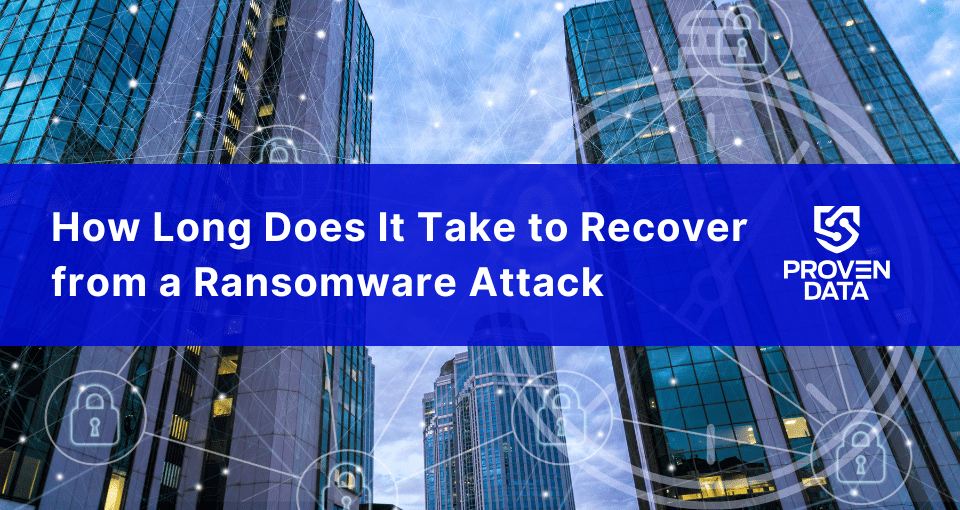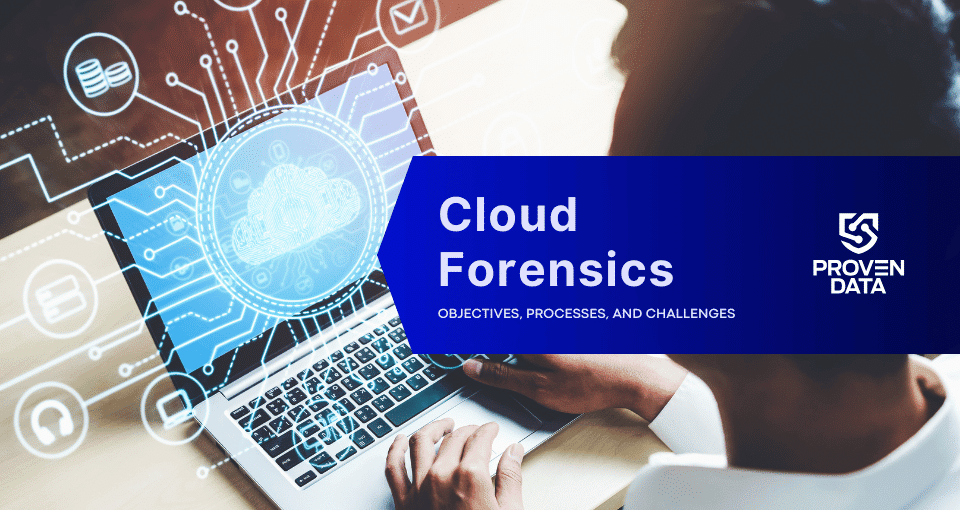The timeframe for ransomware recovery depends on several variables, such as the type of encryption, the forensic investigation process, and the system building. According to a Statista survey, the average recovery time (downtime) after a ransomware attack is 24 days. However, this time can vary from a few days to several months.
Variables of recovery time after a ransomware attack
You must follow the best cybersecurity practices to avoid or minimize downtime due to cyberattacks. Once you understand the variables that impact the recovery time after ransomware, you can better prepare your business to respond to an attack.
1. Data backup availability and quality
Data backup availability and quality are crucial variables for ransomware recovery. Backup availability refers to an organization’s ability to access and restore its data from backup files after a ransomware attack. Backup quality refers to the completeness, accuracy, and reliability of the backup data.
A good backup system can help an organization quickly resume its normal operations without suffering from extended downtime. Furthermore, the effectiveness of data backup and restoration can depend on factors such as:
- The frequency of backup
- The location of backup storage
- Type of backup (full, incremental, or differential)
- The recovery point objective (RPO) and the recovery time objective (RTO)
Enterprise data backup and recovery solutions have become increasingly sophisticated. These systems can help organizations avoid paying ransoms and minimize downtime.
2. Size of the impacted system(s)
The size of the impacted system is another critical variable that affects the recovery time after a ransomware attack. It refers to how the ransomware attack has compromised an organization’s IT infrastructure, including its servers, endpoints, and data.
If the scope of the attack is widespread, it can significantly increase the overall recovery time. This is because the larger the number of systems impacted. The longer it takes to investigate the extent of the attack and identify which systems need to be recovered.
3. The complexity of the IT environment
IT complexity refers to the number of endpoints, configurations, software, hardware, integration, and network topology of an organization’s IT environment.
The recovery process can be more challenging if an organization has a large and complex IT environment. That’s because more endpoints will be impacted and require recovery. A complex system may involve legacy hardware, software, or operating systems that the latest security solutions may not support. In such cases, the IT team may need to spend more time and resources manually updating, patching, or securing vulnerable systems.
Moreover, complex IT environments can make it harder to detect the origin and extent of the ransomware attack. They can also make it harder to contain or isolate the attack to prevent it from spreading to other areas of the system. As a result, the organization may need to spend more time and resources investigating and containing the attack, which can increase the overall recovery time.
4. Availability of trained IT personnel
Another variable that can affect ransomware recovery time is the availability of trained IT personnel. It refers to skilled and experienced professionals who specialize in ransomware incident response, system recovery, and cybersecurity and that work directly for your company or for a recovery service you hired.
If an organization has a sufficient number of trained IT personnel to handle a ransomware attack, it can reduce recovery time by accelerating the identification, containment, and remediation of the attack. Trained staff can quickly assess the situation, identify affected systems, and develop a recovery plan customized to the organization’s specific needs. They can also help establish and implement security best practices that may reduce the likelihood of future attacks.
Having a trained IT team knowledgeable in digital forensics and incident response, data backup and recovery, and cybersecurity best practices can significantly reduce the recovery time after a ransomware attack.
5. Quality of initial incident response
The incident response refers to the immediate actions taken by an organization to contain, investigate, and analyze a ransomware attack.
A high-quality and prompt initial incident response can reduce recovery time by identifying the attack’s origin, understanding its impact, and taking steps to contain it. This can include:
- Isolating impacted systems,
- Blocking network connections,
- Disabling accounts,
- Identifying backup systems and recovery points.
Therefore, an organization’s response to a ransomware attack is critical, and every second counts. Organizations should have an incident response plan in place and conduct regular incident response training. This allows companies and organizations to respond quickly and efficiently to ransomware attacks.
6. The specific type of ransomware
Another variable that affects ransomware recovery time is the specific type of ransomware used in the attack. There are different types of ransomware, and some are more complex and challenging to recover from than others. For example, some ransomware variants are programmed to remove shadow copies of files, making it difficult or impossible to recover encrypted data from backup systems. Other ransomware variants are more complex and adaptive or use advanced techniques, such as encryption key generation, code obfuscation, and polymorphism.
The complexity and sophistication of the ransomware used in the attack can impact recovery time, as it may require more time, effort, and expertise to decrypt or recover the data.
7. The extent of data encryption by the ransomware
Ransomware encrypts files on an infected system. It prevents organizations from accessing data until they pay the ransom or find another way to decrypt it.
The extent of the data encryption refers to the amount and importance of data that is affected by the ransomware attack. The recovery process may be relatively quick and easy if the ransomware only encrypts a few files. However, if it has encrypted a significant amount of data or valuable system files, recovering the data may be more challenging and take a longer time.
8. Effectiveness of the decryption key
You can obtain the decryption key by paying a ransom or by using third-party decryption tools or techniques, such as public decryptors.
The effectiveness of the decryption key is related to whether it can successfully decrypt all the data encrypted during the ransomware attack. If the decryption key is ineffective, the organization may not be able to recover all the encrypted data, resulting in some data loss.
Moreover, cybercriminals may provide a decryption key that works only partially or contain malware or other malicious code that could further damage the system. Therefore, DO NOT PAY THE RANSOM.
To mitigate the risk of ineffective decryption keys, organizations should always consider having backups of all important data before a ransomware attack, even if backups themselves may be vulnerable to attack. For this reason, make sure to keep your backups safe.
The true cost of cyber attacks
Recent data from the Global Security Research Report reveals the staggering impact of cyberattacks:
- Businesses report an average revenue loss of 9% directly from cyber attacks
- On average, businesses suffer 46 known cyberattacks per year—nearly one attack every week
- It takes approximately 7.45 months to recover lost client trust after a cyber attack
The immediate financial damage is just the beginning. Cyber attacks can lead to:
- Customer loss: 17% of breaches
- Data loss: 29% of attacks
- Financial damage: 23% of attacks
- Customer account compromises: 22% of attacks
What is the impact of downtime on business operations and revenue?
The length of downtime can significantly impact an organization’s operations and revenue. Depending on the type of business, even short periods of downtime can lead to lost opportunities, reduced customer satisfaction, and reputational damage.
Furthermore, longer recovery timeframes mean additional costs due to extended labor hours, increased IT infrastructure investment, or revenue loss from disruption to core services.
In conclusion, while ransomware recovery time frames vary widely depending on numerous factors such as data encryption extent and decryption key effectiveness, organizations should always be prepared with contingency plans to mitigate associated downtime risks.
Next steps to ransomware recovery
Whether you can restore from backups or decrypt your files, you must consider requiring a ransomware removal service as well. The ransomware recovery specialists at Proven Data are here to help you. Our 24/7 services can walk you through a ransomware incident from start to finish.







